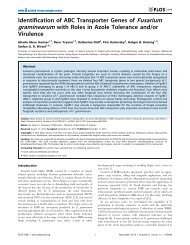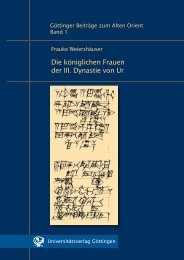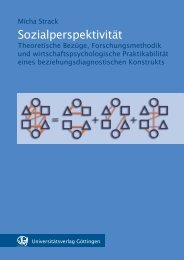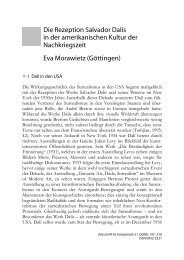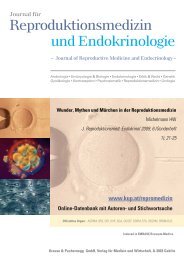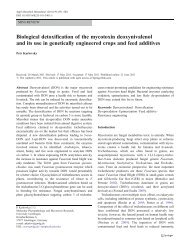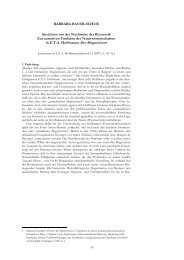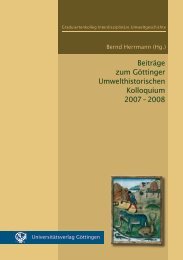Downloaded by University of Goettingen on 14 March 2013 Published on 04 January 2011 on http://pubs.rsc.org | doi:10.1039/C0DT00665C <strong>Dalton</strong> <strong>Transactions</strong> Dynamic Article Links Cite this: <strong>Dalton</strong> Trans., 2011, 40, 1662 www.rsc.org/dalton PAPER Access to new Janus head ligands: linking sulfur diimides and phosphanes for hemilabile tripodal scorpionates† Margret M. Meinholz, a Sushil K. Pandey, b Stephan M. Deuerlein a and Dietmar Stalke* a Received 15th June 2010, Accepted 24th November 2010 DOI: 10.1039/c0dt00665c Reactions of lithium dialkyl/phenyl phosphanylmethylides, RR¢PCH(X)Li (R, R¢=Me, Et, Ph and R = Me, R¢ =Ph; X = H or Me), with sulfur diimides S(NR¢¢) 2 (R¢¢ = t Bu or SiMe 3) in an equimolar ratio yielded Janus head complexes with the structural motif [Li{RR¢PCH(X)S(NR¢¢) 2}] 2 (R¢¢ = t Bu, SiMe 3). The basic core of these dimeric complexes is composed of a (LiN) 2 four-membered ring containing two four-coordinated lithium atoms. A lithium complex of the new Janus head ligand with another structural motif [TMEDA·Li{Ph 2PCH 2S(NSiMe 3) 2}] (6) could be isolated from the reaction of [Ph 2PCH 2Li·TMEDA] with S(NSiMe 3) 2. Two monomeric complexes [Mg{Me 2PCH 2S(NR¢¢) 2} 2](7, 8) were synthesised by a straightforward reaction of [Li{Me 2PCH 2S(NR¢¢) 2} 2] with MgCl 2 in pentane. The magnesium atom is chelated by one phosphorus atom and two nitrogen atoms of each unit of the hemilabile ligand in a tripodal manner, leading to octahedral geometry around the magnesium cation. A complete analysis of [Ph 2PCH 2(SNSiMe 3)(HNSiMe 3)] (9) is also described in which one nitrogen atom of the imido moiety is protonated. Introduction Over the past few years our group has concentrated on heteroatomic-substituted multidentate ligand systems featuring two pendent arms and a second coordination site, which can also be referred to as “claw” ligands 1 or scorpionates. 2 Our principal strategy is to develop these ligands which bear coordination sites for both hard and soft metal centres in terms of the HSAB concept. 3,4 If both coordination sites of the ligand point in opposite directions we call that a Janus head ligand. The functionalization of organodiimidosulfinates may be expanded by the introduction of an additional donor site in the backbone of the carbon substituent at the central sulfur atom. Ideally, this donor should be soft. By these means, simultaneous coordination of hard and soft metals in heterobimetallic complexes would be feasible, promoting their catalytic versatility. If the length of the connecting clamp is large enough, both the apical and ancillary donors of the ambidentate ligands will be able to coordinate the same metal. In addition, such ambidentate systems will provide rigid and well defined coordination geometries leading to interesting chemical properties and reactivity patterns. a Institut für Anorganische Chemie der Universität Göttingen, Tammannstraße 4, 37077, Göttingen, Germany. E-mail: dstalke@chemie.unigoettingen.de; Fax: +49-551-39-3459; Tel: +49-551-39-3000 b Department of Chemistry, University of Jammu, Jammu, 180 006, India † Electronic supplementary information (ESI) available: Experimental and crystallographic data, including the coordinates of all the species. CCDC reference numbers 779986–779988 and 779990–779995. For ESI and crystallographic data in CIF or other electronic format see DOI: 10.1039/c0dt00665c A literature survey shows that several tripodal ligand systems with group 15 elements as bridgehead atoms are known. 4–15 However, in most of these cases the metal is coordinated by the ancillary donors. Anionic ligands consisting of carbanions and heavier group 14 elements are another possibility for creating Janus head systems (Fig. 1). 16 Fig. 1 Some tripodal ligand systems. It is apparent from recent breakthroughs in this area that such ligands are about to be further developed and promising results are likely to occur. 17 Multifunctional ligands with podand topology provide intrinsically well defined coordination geometries with interesting bonding aspects and reactivity patterns. There is growing interest in multidentate hemilabile ligand systems featuring dual functionality. The modification of classical chelating ligands to produce novel and fluxional multidentate systems has opened up an exciting area of research in the last few years. 18 Janus head complexes are finding ever increasing applications in areas like heterolytic H 2-splitting, 19 NLO (non linear optic) materials, 20 organic transformation, 21 asymmetric catalysis, 22 cross coupling, 11 microbial agents 23 or light emitting diodes (LEDs). 24 1662 | <strong>Dalton</strong> Trans., 2011, 40, 1662–1671 This journal is © The Royal Society of Chemistry 2011
Downloaded by University of Goettingen on 14 March 2013 Published on 04 January 2011 on http://pubs.rsc.org | doi:10.1039/C0DT00665C The complexes of magnesium metal with a ligand containing sulfur, nitrogen and phosphorus atoms may be promising precursors for semiconducting materials in the sol–gel or CVD process. 25 Recently, the construction of (hetero)bimetallic or even multimetallic complexes using Janus head ligands became an interesting field of research since such complexes may serve as model compounds for one-dimensionally conducting polymers. 16,25,26 We have already targeted group 15 element centred ligands, 1a,b which are able to employ their substituent periphery in metal coordination, and reported on lithium sulfur ylides. 27,28 The complex [(H 5C 3)Ni{ t Bu 2PCH 2S(NSiMe 3) 2}], has been reported in a patent as an active catalyst for the co-polymerization of ethylene with polar co-monomers without further study. 29 Therefore we have inserted bis(tert-butyl)sulfur diimide into the Li–C bond of organolithium species to link a sulfur diimide with a phosphanyl moiety to study the coordination geometry of the resulting ligand. We report herein the synthesis, characterization and single crystal X-ray structure elucidation of [Li{RR¢PCH(X)S(NR¢¢) 2}] 2 (R¢¢ = t Bu, X = H, RR¢ = Me (1)/Ph (3), R = Me, R¢ = Ph (5); R¢¢ = SiMe 3, X = H, RR¢ = Me (2); R¢¢ = SiMe 3, X = Me, RR¢ =Et (4), [TMEDA·Li{Ph 2PCH 2S(NSiMe 3) 2}] (6), [Mg{Me 2PCH 2S(N t Bu) 2} 2](7), [Mg{Me 2PCH 2S(NSiMe 3) 2} 2](8) and [Ph 2PCH 2(SNSiMe 3)(HNSiMe 3)] (9).‡ ‡ Single-crystal structural analysis: The X-ray data sets were collected at 100(2) K on a Bruker TXS Mo rotating anode (1, 3, 4, 7 (T = 250 K), 8, 9)or an INCOATEC Mo micro source 39 (2, 5, 6) with mirror-monochromated Mo-K a radiation (l = 0.71073 A˚ ). The single crystals were mounted in inert oil under argon atmosphere by applying special cryo application techniques. 40 Structures were solved by direct methods with SHELXS and refined by full-matrix least squares on F 2 for all data with SHELXL. 41,42 Non-hydrogen atoms were refined with anisotropic displacement parameters. All H atoms were placed in calculated positions and refined using a “riding-model”.[Li{Me 2PCH 2S(N t Bu) 2}] 2(1): C 22H 52N 4P 2S 2Li 2, M = 512.62, triclinic, P1¯, a = 9.4916(4) A˚ , b = 9.6726(4) A˚ , c = 18.7808(8) A˚ , a = 98.772(1) ◦ , b = 92.004(1) ◦ , g = 114.778(1) ◦ , V = 1537.76(11) A˚ 3 , Z = 2, 27 095 reflections measured, 7923 independent reflections (R int = 0.0191), 305 parameters, R 1 (all data) = 0.0341, R 1[I > 2s(I)] = 0.0266, wR 2 (all data) = 0.0693, wR 2[I > 2s(I)] = 0.0657, GoF = 1.054, largest diff. peak and hole 0.433 and -0.304 eA˚ -3 .[Li{Me 2PCH 2S(NSiMe 3) 2}] 2(2): C 18H 52N 4Si 4P 2S 2Li 2, M = 576.94, triclinic, P1¯, a = 10.2715(11) A˚ , b = 10.356(11) A˚ , c = 10.4832(11) A˚ , a = 68.636(1) ◦ , b = 65.728(1) ◦ , g = 60.990(1) ◦ , V = 869.77(16) A˚ 3 , Z = 1, 21 105 reflections measured, 3546 independent reflections (R int = 0.0145), 153 parameters, R 1 (all data) = 0.0236, R 1 [I > 2s(I)] = 0.0216, wR 2 (all data) = 0.0619, wR 2 [I > 2s(I)] = 0.0607, GoF = 0.861, largest diff. peak and hole 0.314 and -0.223 eA˚ -3 .[Li{Ph 2PCH 2S(N t Bu) 2}] 2(3): C 42H 60N 4P 2S 2Li 2, M = 760.91, triclinic, P1¯, a = 9.6236(11) A˚ , b = 10.1512(12) A˚ , c = 11.3253(13) A˚ , a = 73.936(2) ◦ , b = 84.728(2) ◦ , g = 88.960(2) ◦ , V = 1058.7(2) A˚ 3 , Z = 1, 25 994 reflections measured, 5259 independent reflections (R int = 0.0399), 241 parameters, R 1 (all data) = 0.0564, R 1[I > 2s(I)] = 0.0391, wR 2 (all data) = 0.1026, wR 2[I > 2s(I)] = 0.0976, GoF = 1.054, largest diff. peak and hole 0.391 and -0.381 eA˚ -3 .[Li{Et 2PCH(Me)S(NSiMe 3) 2}] 2(4): C 24H 64N 4Si 4P 2S 2Li 2, M = 661.09, triclinic, P1¯, a = 10.6002(6) A˚ , b = 10.635(1) A˚ , c = 10.7744(6) A˚ , a = 100.785(1) ◦ , b = 117.366(1) ◦ , g = 103.446(1) ◦ , V = 986.48(12) A˚ 3 , Z = 1, 39 887 reflections measured, 4676 independent reflections (R int = 0.0146), 181 parameters, R 1 (all data) = 0.0299, R 1 [I > 2s(I)] = 0.0277, wR 2 (all data) = 0.0768, wR 2 [I > 2s(I)] = 0.0747, GoF = 1.068, largest diff. peak and hole 0.686 and -0.453 eA˚ -3 .[Li{Ph(Me)PCH 2S(N t Bu) 2}] 2(5): C 32H 56N 4P 2S 2Li 2, M = 636.75, monoclinic, P2 1/c, a = 10.5006(14) A˚ , b = 20.753(3) A˚ , c = 8.5699(11) A˚ , a = g = 90 ◦ , b = 97.279(2) ◦ , V = 1852.5(4) A˚ 3 , Z = 2, 39 157 reflections measured, 3784 independent reflections (R int = 0.0274), 197 parameters, R 1 (all data) = 0.0325, R 1 [I > 2s(I)] = 0.0305, wR 2 (all data) = 0.0788, wR 2 [I>2s(I)] = 0.0778, GoF = 1.050, largest diff. peak and hole 0.409 and -0.247 eA˚ -3 .[TMEDA ∑ Li{Ph 2PCH 2S(NSiMe 3) 2}] Results and discussion The linkage of sulfurdiimide and phosphane in order to gain access to a new type of Janus head ligand is achieved by an equimolar reaction of lithium dialkyl/phenyl phosphanylmethanide, RR¢PCH(X)Li (RR¢ = Me, X = H(1, 2); RR¢ = Ph, X = H(3); R = Et, X = Me (4); R = Me, R¢ =Ph, X = H (5)) with bis(trimethylsilyl)sulfur diimide, S(NSiMe 3) 2, or bis(tertbutyl)sulfur diimide, S(N t Bu) 2,inn-pentane under anhydrous and inert gas conditions (Scheme 1). Scheme 1 Compounds 1–5 were obtained as white solids. The elemental analyses were found to be consistent with the molecular formulae. Compound 1 crystallizes from n-pentane as colourless plates in the triclinic space group P1¯. A dimer is formed owing to the inadequate bite of the ligand to the small lithium cation (Fig. 2). The Me 2P-sidearm is not coordinating to the already SN 2-complexed lithium atom but to that of the second molecule. The main core of the system is a (LiN) 2 four-membered ring with both the lithium atoms forming three N- and one P-contact each. One nitrogen atom of each ligand unit is coordinated to both lithium atoms while the second coordinates just the lithium atom of one half of the dimer (Li1–N1/Li2–N4). The phosphorus coordination to that lithium atom (Li1–P2/Li2–P1) provides additional stability to the complex (Fig. 3). Both halves of the dimer show almost no differences in bond lengths and angles. All S–N distances (1.6144(9)–1.6351(9) A˚ ) are slightly shorter than an (6): C 27.5H 52N 4Si 2PSLi, M = 564.89, monoclinic, C2/c, a = 33.944(5) A˚ , b = 9.5352(13) A˚ , c = 21.921(3) A˚ , a = g = 90 ◦ , b = 101.895(3) ◦ , V = 6942.4(17) A˚ 3 , Z = 8, 48 696 reflections measured, 6847 independent reflections (R int = 0.0632), 441 parameters, 16 restraints, R 1 (all data) = 0.0505, R 1 [I > 2s(I)] = 0.0368, wR 2 (all data) = 0.0942, wR 2 [I > 2s(I)] = 0.0871, GoF = 1.041, largest diff. peak and hole 0.348 and -0.245 eA˚ -3 .[Mg{Me 2PCH 2S(N t Bu) 2} 2](7):C 22H 52N 4P 2S 2Mg, M = 523.07, orthorhombic, Fdd2, a = 37.169(8) A˚ , b = 10.175(2) A˚ , c = 16.851(4) A˚ , V = 6373(2) A˚ 3 , Z = 8, 21 122 reflections measured, 3270 independent reflections, R int = 0.0407, 180 parameters, R 1 (all data) = 0.0467, R 1[I > 2s(I)] = 0.0444, wR 2 (all data) = 0.1147, wR 2[I > 2s(I)] = 0.1137, GoF = 1.183, largest diff. peak and hole 0.228 and -0.212 eA˚ -3 .[Mg{Me 2PCH 2S(NSiMe 3) 2} 2](8):C 18H 52N 4Si 4P 2S 2Mg, M = 587.37, monoclinic, P2 1/n, a = 10.2563(5) A˚ , b = 17.8142(8) A˚ , c = 19.2917(9) A˚ , a = g = 90 ◦ , b = 99.273(1) ◦ , V = 3478.7(3) A˚ 3 , Z = 4, 156 125 reflections measured, 9326 independent reflections (R int = 0.0192), 296 parameters, R 1 (all data) = 0.0238, R 1 [I > 2s(I)] = 0.0213, wR 2 (all data) = 0.0630, wR 2 [I > 2s(I)] = 0.0612, GoF = 1.019, largest diff. peak and hole 0.286 and -0.263 eA˚ -3 .Ph 2PCH 2(SNSiMe 3)(HNSiMe 3)(9): C 19H 31N 2Si 2PS, M = 406.67, monoclinic, P2 1/n, a = 12.9937(7) A˚ , b = 9.9367(6) A˚ , c = 18.1145(1) A˚ , a = g = 90 ◦ , b = 99.843(1) ◦ , V = 2304.4(2) A˚ 3 , Z = 4, 43 786 reflections measured, 5491 independent reflections (R int = 0.016), 235 parameters, R 1 (all data) = 0.0289, R 1 [I > 2s(I)] = 0.0278, wR 2 (all data) = 0.0767, wR 2 [I > 2s(I)] = 0.0757, GoF = 1.052, largest diff. peak and hole 0.596 and -0.340 eA˚ -3 .Crystallographic data (excluding structure factors) for the structures reported in this paper have been deposited with the Cambridge Crystallographic Data Centre as supplementary publication no. CCDC 779986 (1), 779990 (2), 779987 (3), 779991 (4), 779992 (5), 779993 (6), 779988 (7), 779994 (8) and 779995 (9). This journal is © The Royal Society of Chemistry 2011 <strong>Dalton</strong> Trans., 2011, 40, 1662–1671 | 1663



